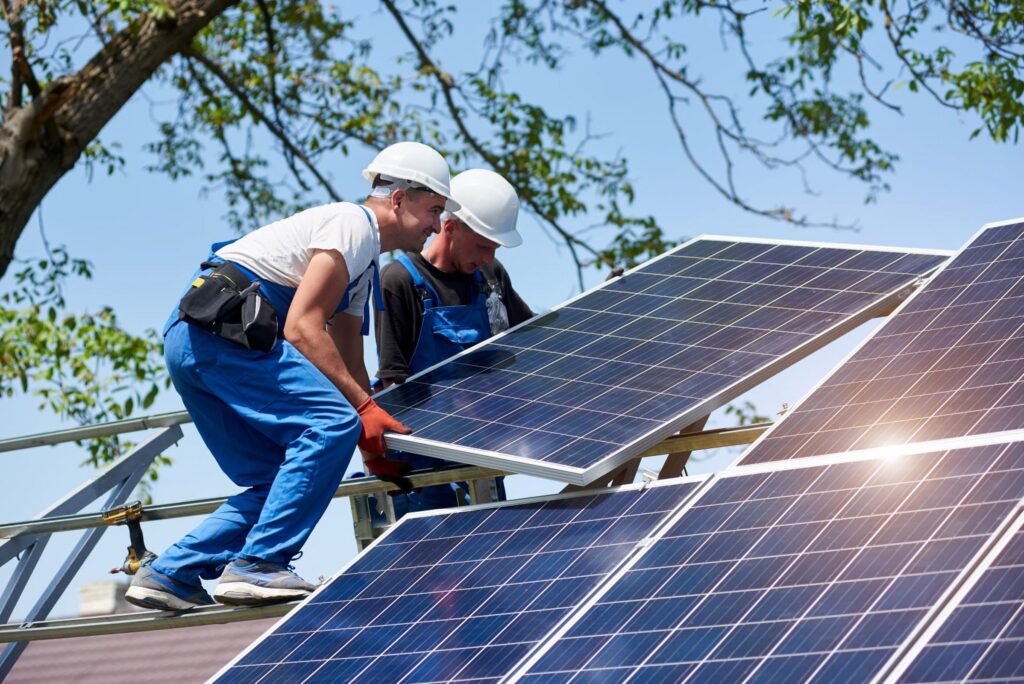Thinking of going solar at your home in Andhra Pradesh? VMJ Solar presents a clear, step-by-step home installation guide—helping you navigate everything from planning, subsidies, and compliance, to safe mounting, wiring, and leveraging net metering to maximize returns.
Step-by-Step Home Solar Installation in Andhra Pradesh
1. Assess & Plan
- Energy Needs: Track your household’s kWh usage over the last 2–3 months to size your system correctly.
- Site Potential: Inspect your roof’s orientation (ideally south-facing), tilt, shading, and structure. For precision, installers may use satellite and irradiance data.
2. Choose the Right System
- System Type: On-grid systems allow net metering; off-grid systems require battery support.
- Components: Select MNRE/BIS-certified solar panels, a quality inverter (string or micro), and a secure mounting structure.
2. Choose the Right System
- System Type: On-grid systems allow net metering; off-grid systems require battery support.
- Components: Select MNRE/BIS-certified solar panels, a quality inverter (string or micro), and a secure mounting structure.
3. Permits & Subsidy Application
- Register on the National Solar Rooftop Portal with your Aadhaar and DISCOM details.
- Apply for the PM Surya Ghar Muft Bijli Yojana subsidies—up to Rs78,000 depending on capacity—and get net-metering set up
4. Mounting Structure Installation
- Use firm rails, brackets, and flashings for secure attachment with proper sealing for waterproofing.
- Set tilt angle between 15°–20° for optimal sun exposure.
5. Panel Mounting & Wiring
- Secure panels with stainless steel bolts; maintain gaps for thermal expansion.
- Wire panels in series (for higher voltage) or parallel (for higher current) using MC4 connectors.
6. Inverter & Grid Connection
- Connect panels to the inverter, then link to your home’s electrical panel and the grid.
- Ensure proper earthing to avoid electrical hazards.
7. Testing & Commissioning
- Power up and verify energy output via the inverter or monitoring app.
- Schedule net metering activation with your DISCOM.
8. Maintenance & Monitoring
- Clean panels regularly—dust and pollution can reduce efficiency significantly
- Consider an AMC (annual maintenance contract) for periodic cleaning and checks (~Rs1,500–Rs4,000/year).
- Use tools or apps to track real-time performance and detect issues early.
Summary Table
| Step | Task Description |
|---|---|
| 1 | Energy assessment & site planning |
| 2 | Choose system: on-grid vs off-grid, components |
| 3 | Permits & subsidy application |
| 4 | Secure and tilt mounting structure |
| 5 | Mount panels & wire appropriately |
| 6 | Connect inverter, home, grid; ensure earthing |
| 7 | Test system and activate net metering |
| 8 | Maintain, clean, monitor system regularly |
FAQs
1.Can I install solar panels myself at home?
While DIY is possible, it’s not advised. Accredited professionals ensure safety, compliance, and system efficiency
2.How long does installation take
Typically about 2–3 days, depending on system complexity and roof specifics.
3.What subsidy options are available in Andhra Pradesh?
You can apply for the PM Surya Ghar Yojana—subsidies up to Rs78,000—and net metering support; subsidies are credited to your bank account
4.How do I maintain my solar system?
Clean panels regularly, get professional checks (via AMC), and monitor using apps to ensure optimal performance.
5.What if my roof isn’t ideal?
Even with shading or limited space, installers can optimize layout, tilt, or consider ground-mounted options. A site survey helps tailor the solution.
Conclusion:
With VMJ Solar’s comprehensive guide and local expertise in Andhra Pradesh—from subsidy navigation to quality installation—you’re well equipped to make the shift to reliable, clean, and efficient home solar power. Let’s make your solar journey smart and seamless.

